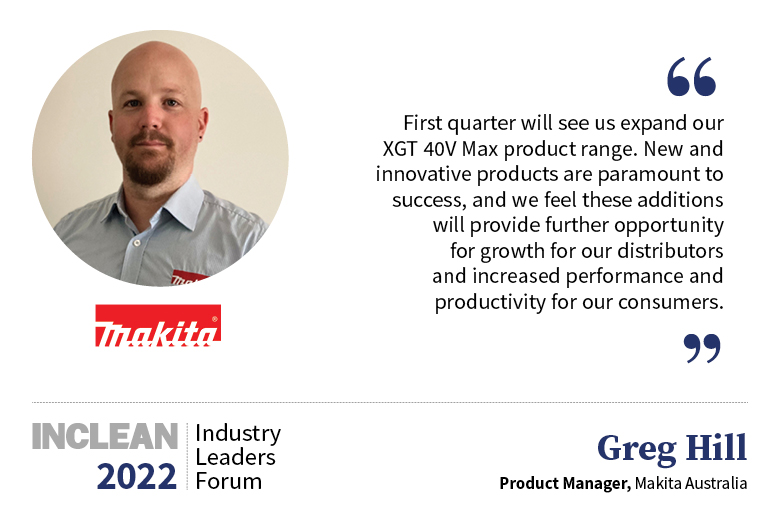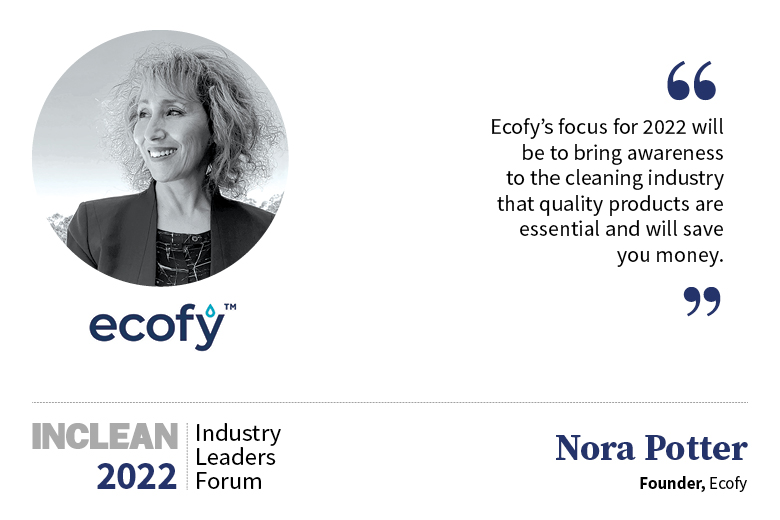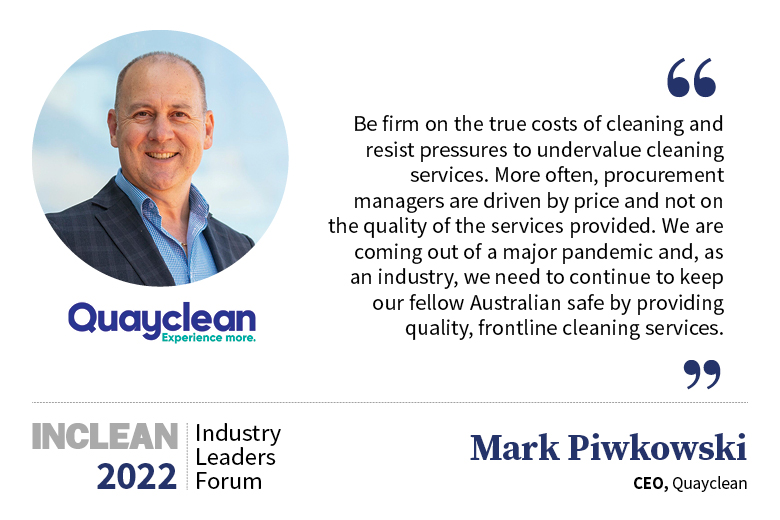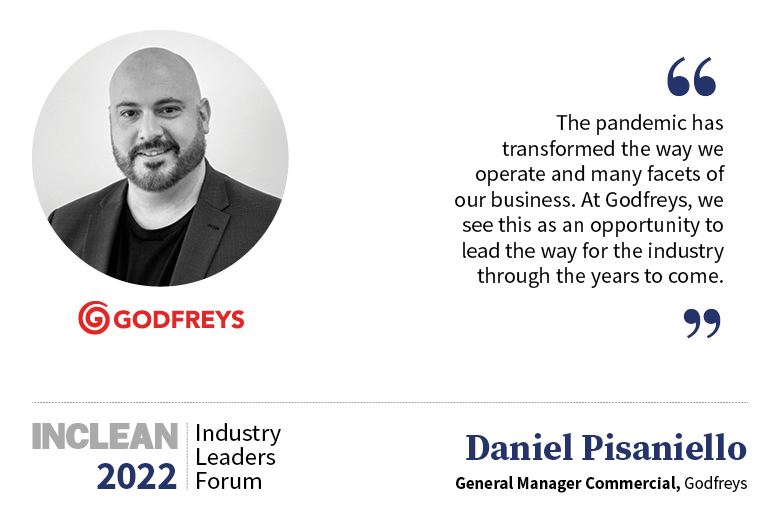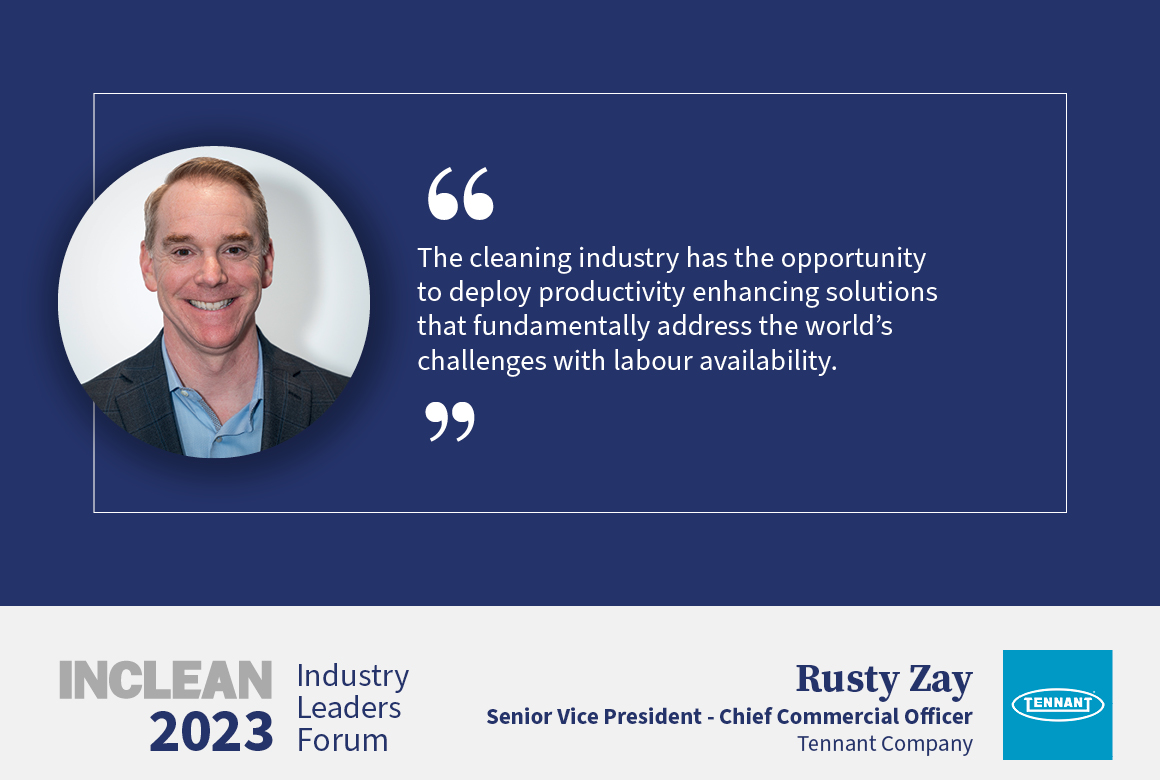
How was 2022 for Tennant?
2022 was a challenging year for Tennant Company as strong customer demand encountered the reality of historic disruptions to the global supply chain.
A vast amount of our focus in 2022 was on managing supply chain disruption and doing everything possible to mitigate the impact to our customers.
What were the highlights?
The highlights for 2022 for TNC included generally strong demand from customers for our solutions. We were pleased to see the expanding adoption of AMR across a growing and diversified customer base.
We focused on partnering with customers to deploy AMR in a way that would help them manage through their challenges with labor availability, cost, and consistency. The continued rapid growth of our Latin America business was a highlight for TNC in 2022.
The growth was enabled by deploying new service oriented business models that simplified and reduced the cost of cleaning for our customers. The TNC ANZ business continued to grow rapidly as well in 2022. Our customers have appreciated our introduction of a broader portfolio of products that create an optimal fit for price and value across a wider range of applications.
This broader product portfolio has nicely complemented our core strengths in ANZ of the Tennant brand with industrial customers and our broad factory-direct service coverage.
What were the challenges?
The largest challenge for TNC in 2022 was managing through the disruption in the global supply chain while doing everything that we could to continue providing our customers with the exceptional experience they have to come to expect from TNC.
Due to the heroics of the TNC team we had many products where lead-times remained at normal levels. But, despite our best efforts, our customers still experienced longer than typical lead-times on a subset of our products.
We’re fortunate in that customers appreciate the value that TNC offers and have generally been understanding of the situation as the challenges have affected the entire cleaning equipment market as well as nearly any company that supplies complex mechanical and electric products.
What are your main priorities for 2023?
Reducing lead-times to the benefit of our customers remains the definitive number one priority at Tennant Company. We’re encouraged by the progress we’ve seen across the most challenged product categories. We’re optimistic and confident that through active management the vast majority of our product lines will return to more lead times in 2023.
Partnering with customers to leverage AMR to address the issue of labor availability, cost, and consistency in their cleaning operations. The pandemic has accelerated a global trend in constrained labor availability. The result has been challenges in hiring and retaining enough employees to maintain clean facilities. We are working with customers to help them understand the benefits of robotic cleaning and the profound changes necessary to be successful in its deployment.
Success in deploying robotic cleaning requires a full eco-system of support over the life cycle of the solution and we believe we are uniquely positioned to partner with our customers in enabling that transition.
The continued expansion of our Tennant brand product portfolio to offer more floorcare solutions that deliver the value customers need at price points that suit their budgets.
We’ve long heard from customers that they value the support they get from customers across the buying journey from their first interaction with the brand through the entire life cycle of the product include service and aftermarket support. We’re combining our differentiated ability to support the customer with an expanded product portfolio that leverages global platforms at multiple price points.
What do you expect to be the big trends of 2023?
We believe the challenges with labor availability, labor cost, and labor consistency will continue to impact most industries and geographies and be felt acutely within the cleaning industry.
We have heard from our customers and experienced ourselves how difficult it is to find the right talent, how the cost of labor has increased dramatically in most geographies, and how it is becoming increasingly difficult to retain talent consistently.
Indicators of labor force participation and labor demographic trends suggest this challenge will persist for years to come.
We expect that global supply chain disruptions will continue to be a disruptive force in 2023. Challenges with availability in certain categories of components will continue and supply chain resiliency will persist as a top priority for most global manufacturers.
Inflation will continue at elevated levels. We expect inflationary pressures to put pressure on customers’ capital and expense budgets and that the overall demand environment in our industry as well as most others will likely to become more challenging
We anticipate that sustainability and addressing climate change will continue to increase in its relevance and importance for our customers and for society in-general.
We believe that a growing number of customers will elevate sustainability higher in their list of corporate priorities.
And we believe that customers that have already made commitments will seek to accelerate real and tangible progress towards zero-emissions targets and combine that with a greater focus on energy efficiency.
What do you see as the main challenges the market is facing in 2023?
As mentioned above, we see labor availability, labor cost, and labor consistency as being one of the largest challenges faces the overall cleaning market in 2023 (and beyond). We see this challenge as an opportunity to help our customers solve this as their biggest challenge. We can work to overcome this challenge by helping our customers convert more manual cleaning to mechanized cleaning.
Manual cleaning is more time intensive, produces inferior results, and is a less desirable task when compared to mechanized cleaning.
We’ll seek to leverage our expanding portfolio of solutions that are well-suited to replace manual cleaning and combine that with a consultative sales process to help our customers make this transition.
Similarly, AMR is an opportunity to further automate cleaning that is already mechanized. By deploying AMR we enable the redeployment of labor from cleaning to other important tasks.
The transition to AMR cleaning is not a simple one. We will seek to leverage our experience with hundreds of customers and thousands of AMR units deployed to help them understand what it takes to make an AMR cleaning program successful and deliver real and tangible gains in productivity and cleaning effectiveness.
The potential for the technology exists but it must be combined with the knowledge of cleaning and with the support of a manufacturer that can partner with a customer through the life of the solution.
New and non-traditional competitors are entering the cleaning market, primarily through AMR, which is leading to a level of disruption of challenging traditional competitors.
The entrance of new competitors can be good for the market and has the opportunity to foster a renewed focus of creating value for customers. However, there is a risk that technologies get deployed before they are ready and with insufficient support, which risks leading to poor outcomes in productivity and cleaning effectiveness.
Ultimately, if realized, these risks can damage the credibility of AMR technology and slow the adoption of productivity enhancements that come with it.
We see an opportunity to deploy proven technologies and combine that with knowledgeable and dependable support across the life cycle of the solution. By taking a first-to-perform approach, we believe we have the opportunity to disrupt the market in a way that creates value for our customers.
What opportunities do you see for the cleaning industry in 2023?
As highlighted above, we see that the cleaning industry has the opportunity to deploy productivity enhancing solutions that fundamentally address the world’s challenges with labor availability. There has never been a better opportunity to further automate and enhance the productivity and effectiveness of cleaning – and never has it been more important.
We believe the cleaning industry can be a leader towards a more sustainable and lower carbon emission future. Our data highlights that our biggest opportunity to address climate change is with the “use-phase” of our products.
Thus, the continued development and deployment of more energy efficient cleaning solutions will be key enablers for our customers in achieving their sustainability and emission objectives. Similarly, a significant amount of cleaning equipment continues to be powered by fossil fuels. The cleaning industry has the opportunity to work towards electrification of our solutions and thus enable our customers in achieving their emissions and sustainability objectives.
What learnings has the company taken from the challenges faced over the past 12 months?
As a company we’ve learned of the importance of supply chain resilience. Historically, supply chains have been measured more on the traditional metrics of cost, quality, delivery, and inventory.
The challenges of the past few years have led to the addition of supply chain resilience to that traditional set of metrics and the elevation of it as one of the most critical considerations given the expectation of continued supply chain challenges moving forward.
The elevated importance of supply chain resiliency is led us to focus in on different strategies such as supply chain localisation and designing products that optimize for supply chain resiliency.
The past year has increased our focus on the importance of data across the supply chain and through to our customers. The dynamic lead times and component availability have made the demand for real-time information on part availability and delivery expectations critical to our manufacturing plants.
Similarly, our customers have clearly told us that one of the most important things that we can do to help them is to communicate accurate information on the timing of delivery of parts, service, and equipment.
We expect to use this learning to continue to optimise our internal operations as well as to make investments into ensure we have the tools and processes to provide accurate and timely information to our customers on the status of their deliveries from us.
Finally, the challenges of the past year and the heroics necessary to navigate them while delivering on customer commitments has highlighted the importance of a talented, agile, and resilient team. We are fortunate at Tennant Company to be surrounded by exceptionally talented individuals that are dedicated and passionate about meeting the needs of our customers.
It’s through their heroics that we’ve been able to succeed in meeting the needs of our customers. We are incredibly grateful to all Tennant Company employees worldwide for the exceptional work and commitment they have demonstrated through these challenging times.
What’s the biggest challenge facing leaders today?
One of the biggest challenges we face as leaders today is that the most disruptive forces to our businesses over the past three years are outside of our direct control. The global supply chain crises, historic levels of cost inflation, and major geopolitical divides are all examples of huge challenges that are outside of any business leader’s ability to control. As leaders we’re often accustomed to feeling like we have more control.
There is no silver bullet in leading through these disruptive times but there are a few principles we’ve come to rely on. First, acknowledge the reality of the environment we are operating. To us this means making a candid, data-driven, and realistic assessment of the situation and what’s likely to happen.
This means overcoming an often innate leadership characteristic of optimism and replacing it with a cold-hard look at the facts.
From there, we advise to focus on what you can control. While we can’t control the global availability of micro-chips, we can design products and a supply chain that is more resilient to the disruption. By acknowledging the reality of the situation and then focusing on what we can control we believe we can most effectively navigate any macro-level issue that comes at us.
Is there a message that you would like to share with the industry?
At Tennant Company we feel grateful to participate in an industry that plays such an important role in the world and allows us to pursue of our vision of creating a cleaner, safer, and healthier world.
We look forward to working collectively as competitors, customers, suppliers, and partners to make a positive impact on society by enhancing the productivity, effectiveness, and overall experience of cleaning.
Thanks for continuously challenging us and making us better over our 152 years of existence.
